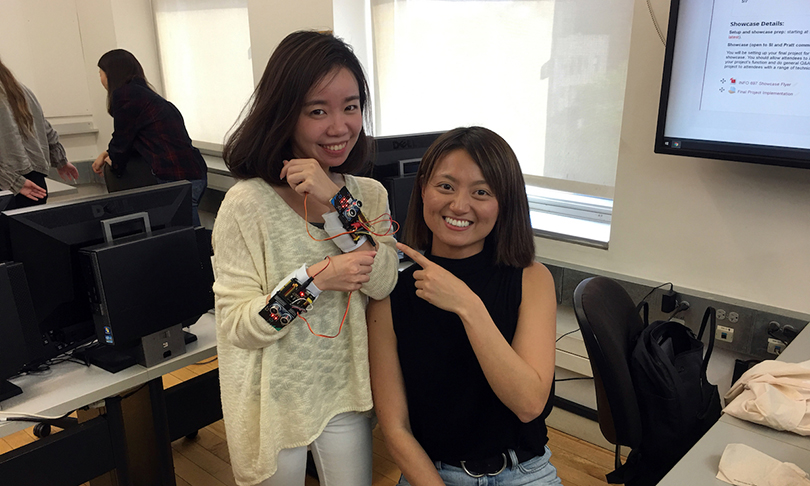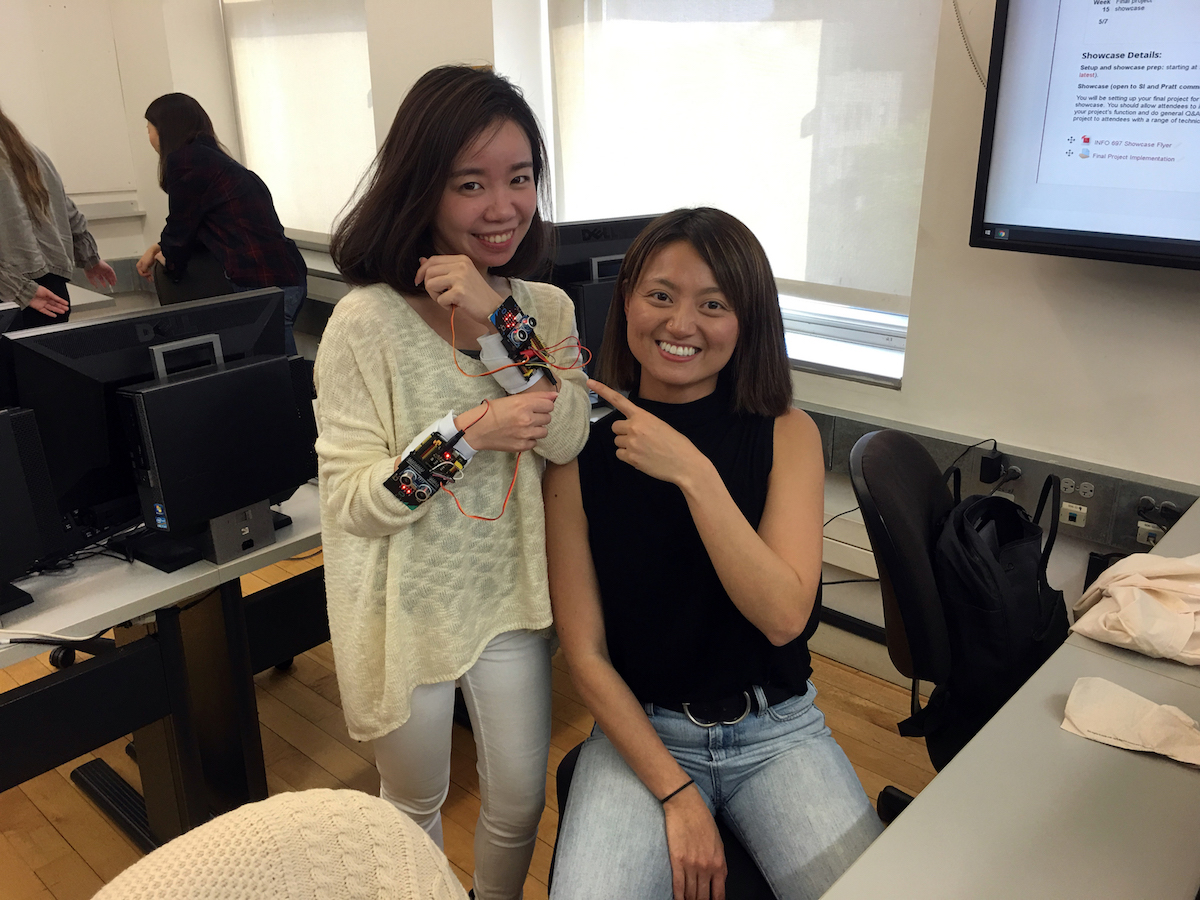
The coursework in the Pratt Institute School of Information often engages with the potential of digital technologies in enhancing and facilitating archives, libraries, museums, and other information and cultural institutions. However, students don’t typically get hands-on experience with the more DIY processes of building technical systems from scratch. In the new Rapid Prototyping and Physical Computing class, Pratt students delve into the diverse applications of technologies associated with the maker movement. Physical computing describes the building of interactive systems that directly respond to the real world and student projects included a touch-activated light installation, interactive replicas of medieval devotional devices, and a cat-operated thermal hammock.
“Low-cost sensors and computing devices designed for ‘tinkering’ have become immensely popular in education and within DIY communities,” said Monica Maceli, Assistant Professor in the School of Information. “These technologies offer myriad possibilities for use in the information professions and in designing and constructing systems.” Maceli added that she has long used these tools in her research and projects over the years and in partnership with the Information Technologies (IT) department was finally able to acquire the supplies, space, and skill sets necessary for the pilot version of the class.
Maceli taught the spring 2019 pilot with Basem Aly, Associate Director of Research and Strategic Projects. It involved students using physical computing devices—including sound and light sensors, applied electronics, microcontrollers, and other readily available technologies—in rapid prototyping, or quick modeling of their projects. Alongside this work, they studied the ideas of the maker movement, technical programming, and electronics to better understand these resources.
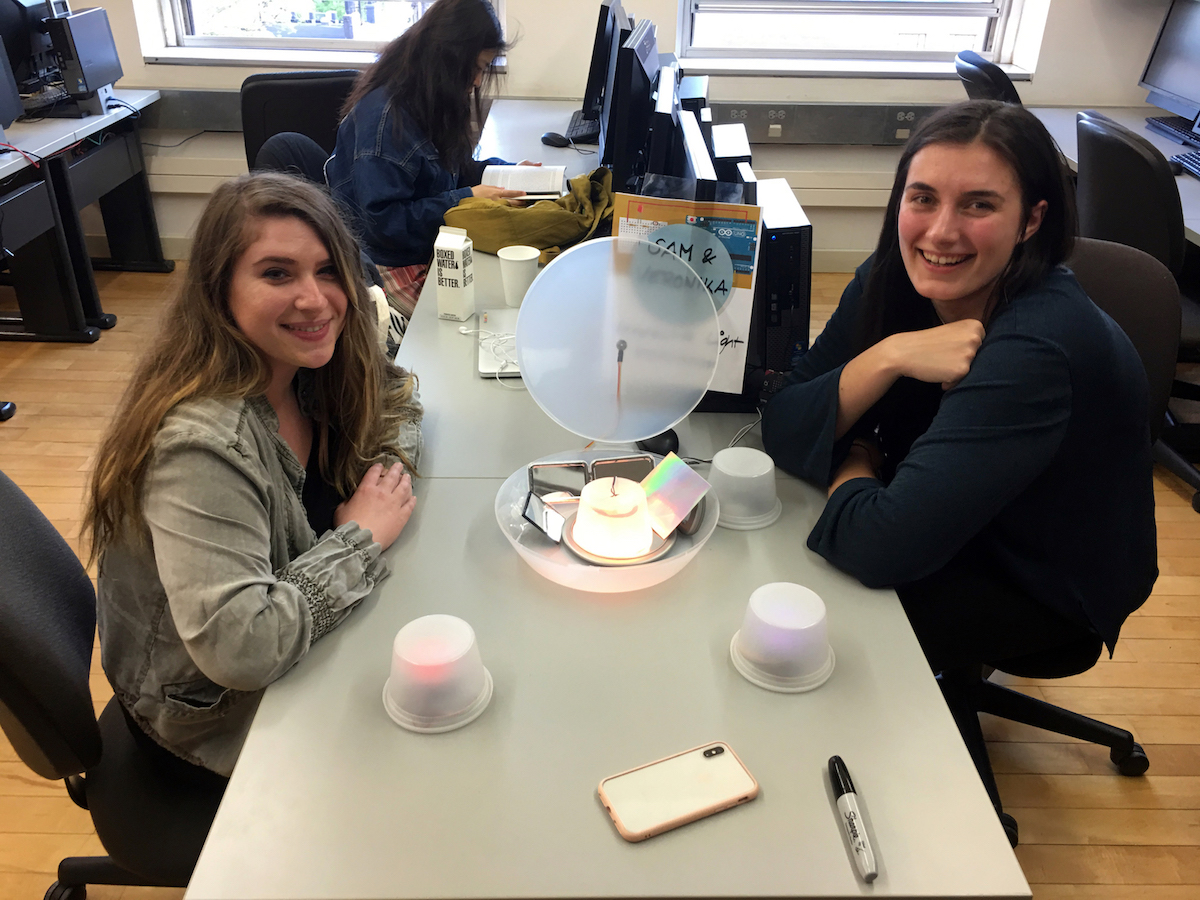
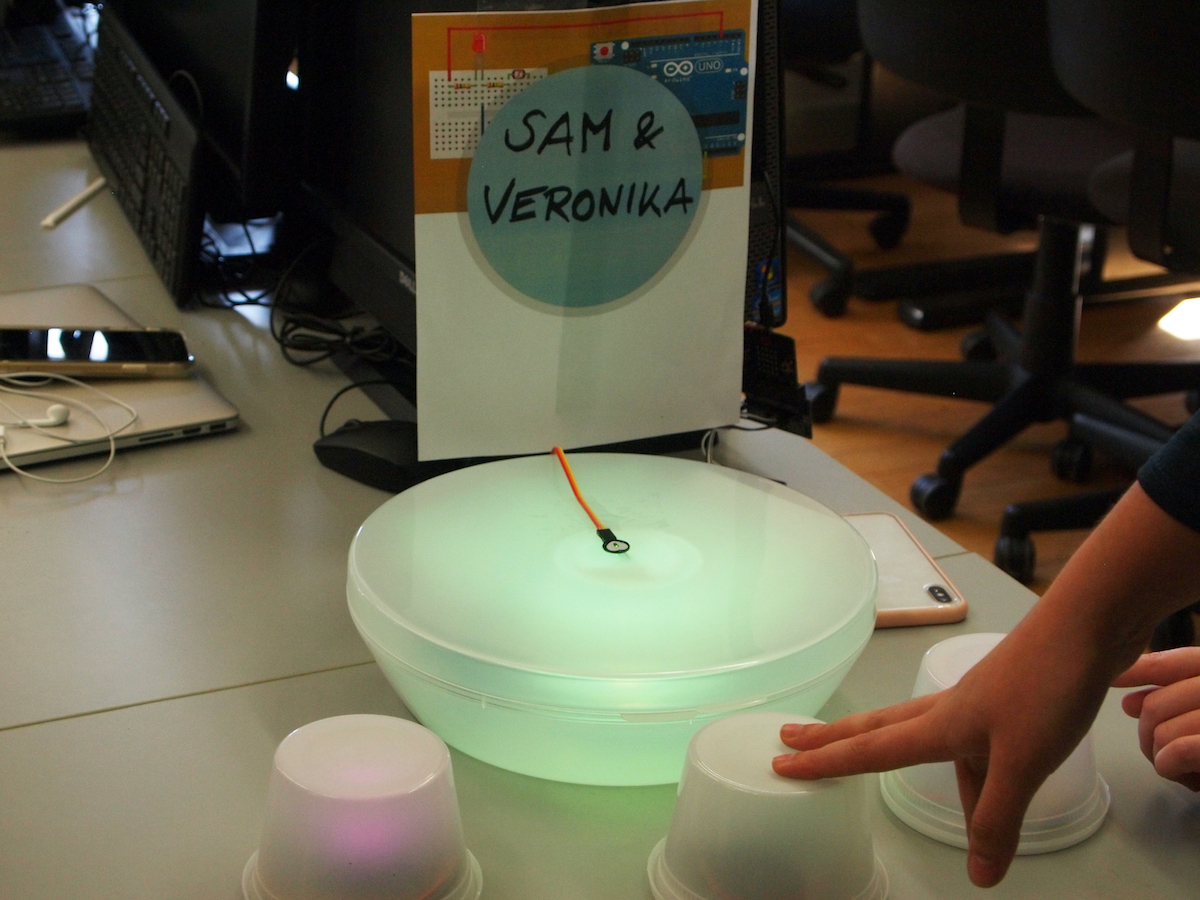
The course was designed to prepare School of Information students for future workplaces such as digital cultural heritage, archives, museums, libraries, or any company that involves information-based user experiences, but their final hardware projects were not limited to those contexts. Samantha Nullman, MS Information Experience Design ’19, and Veronika Kostova, MS Information Experience Design ’20, collaborated on touch-responsive lights. After a user places a hand on the main beacon, it sends signals to receivers that blink in response to the touch in colors that are based on their distance.
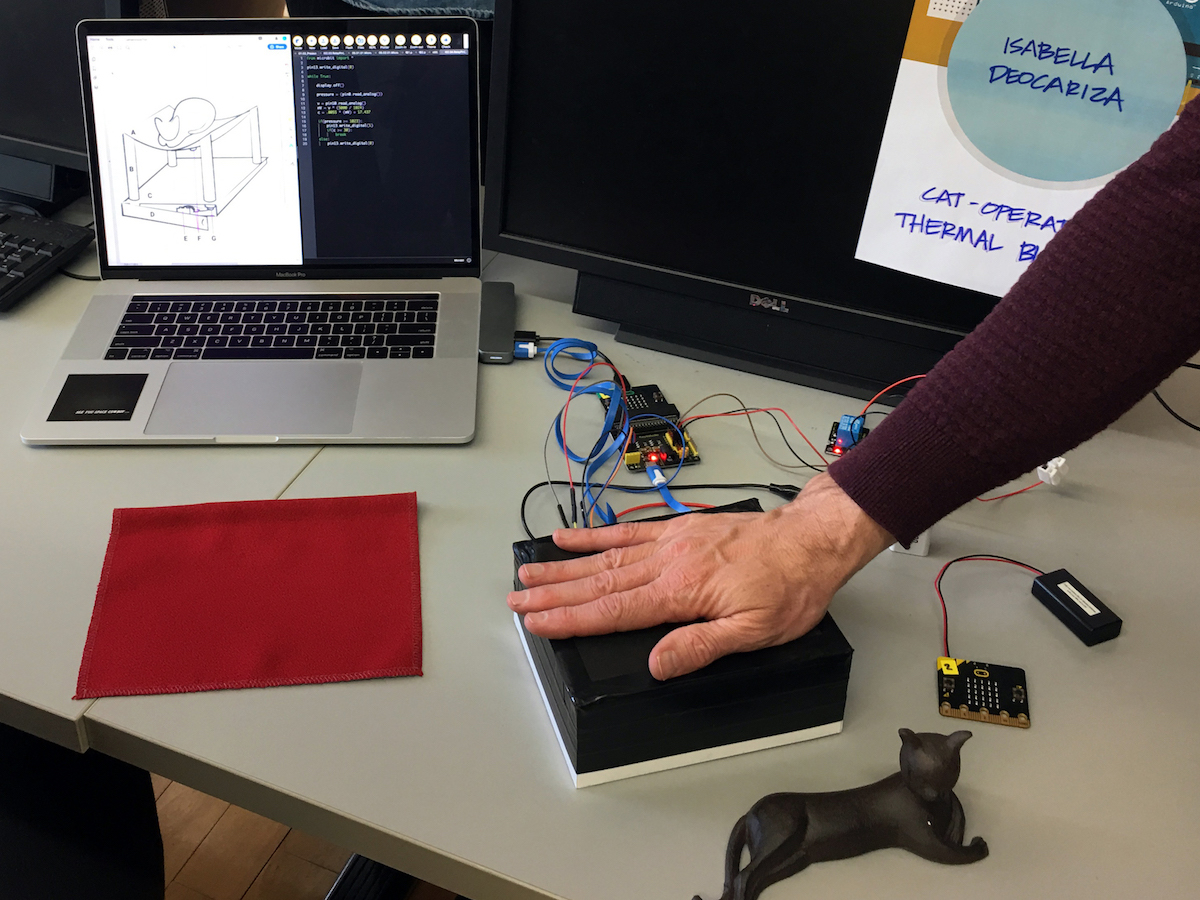
Isabella Deocariza, MS Information Experience Design ’19, made a weight-activated thermal hammock, with pressure sensors turning a blanket on for warmth, a function designed specifically for cats. John R. Decker, Chairperson of the History of Art and Design who took the course as a non-matriculated student, built a box of replica objects related to medieval devotion—including a small sculpture, a pomander ball made to carry perfume, and a sheet of music—with audio related to their historic purposes activated by user interaction. Kexin Cha, MS Information Experience Design ’20, developed sensing devices worn on each wrist that allow users to experience what it’s like to be visually impaired, an experiment in empathy in which participants navigated a hallway on Pratt’s Manhattan campus while blindfolded. The sensors allowed the person to know when they were nearing a wall.
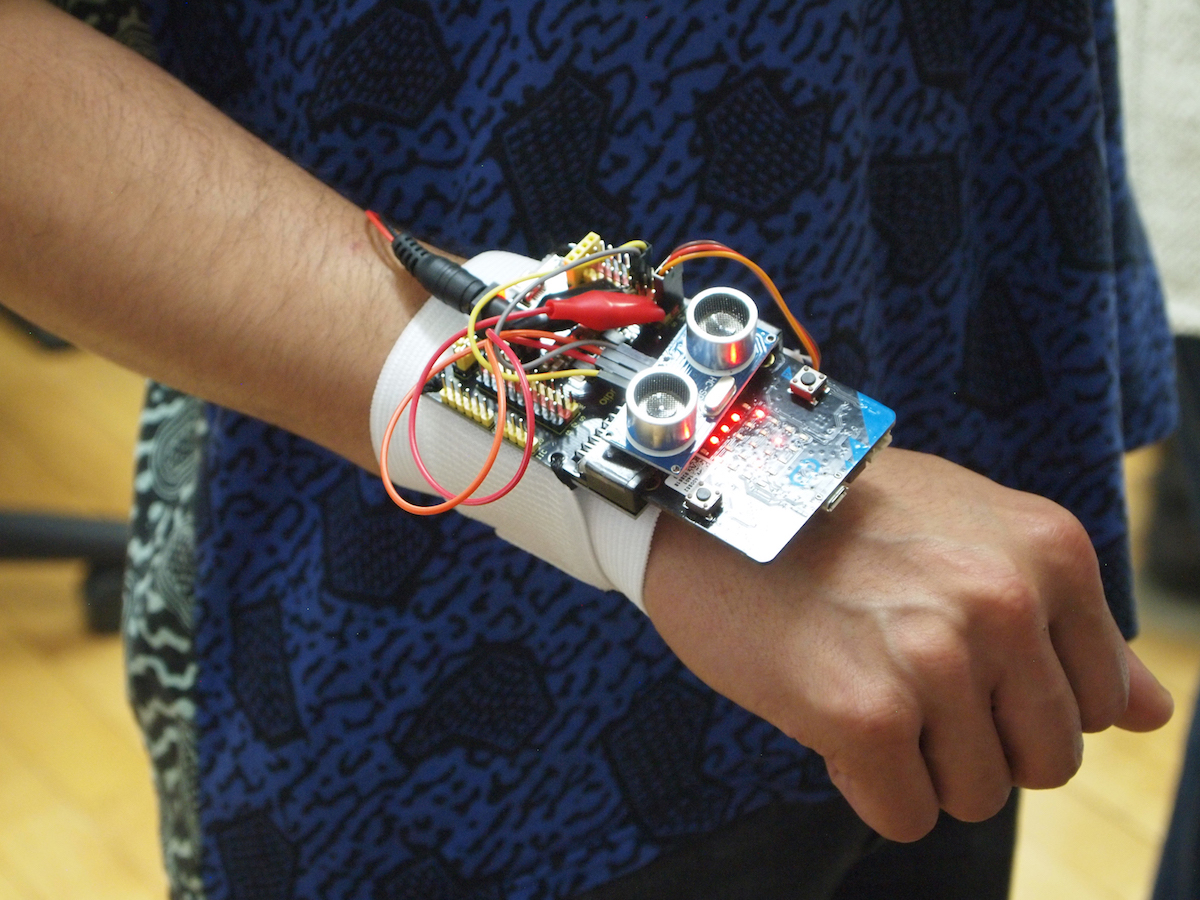
“Both Dr. Maceli and I were happily surprised by how much progress the students made in such a short period of time and how each student discovered and overcame both practical and conceptual obstacles to produce compelling prototypes,” Aly said.
These final projects were presented at the 2019 Pratt InfoShow. Many of the materials used by the students are low-cost; Nullman and Kostova employed garbage bins and oil diffusers for their LED light beacons, Deocariza worked with sensors from an open-source hardware manufacturer aimed at hobbyists. The technology they demonstrated can be employed in countless ways in information settings, whether in automating reference statistics, making digital signage, or reimagining the user experience, yet these skills are rarely taught in information science. Maceli stated that they hope to offer the class regularly in the School of Information and collaborate with the Math and Science department and IT on future related courses. Because physical computing involves affordable technology that is so customizable in its applications, it opens the door to creative experimentation in these fields and expands access to information.
Images: Kexin Cha and Hung-Ju Chen demonstrating Cha’s sensing devices; Samantha Nullman and Veronika Kostova’s interactive light installation; Demonstrating Samantha Nullman and Veronika Kostova’s interactive light installation; Demonstrating Isabella Deocariza’s weight-activated thermal cat hammock; Demonstrating Kexin Cha’s sensing devices
